Refinancing is a process that involves taking out a new mortgage to pay off an existing one. Many homeowners opt to refinance their mortgage to take advantage of lower interest rates, shorten their loan terms, or access their home’s equity. While refinancing can save homeowners money, it can also be a complex process. In this post, we will discuss the refinance process and the key factors homeowners should consider.
Determine your goals
Before you begin the refinance process, it’s important to identify your goals. Why are you refinancing? Do you want to lower your interest rate, shorten your loan term, or access your home’s equity? Each of these goals requires a different approach to refinancing, so it’s important to be clear on your objectives.
Check your middle credit score
Your middle credit score is a critical factor that lenders consider when you apply for a refinance. A higher middle credit score can help you secure a better interest rate and lower monthly payments. Before you apply for a refinance, it’s important to check your credit score and ensure it is in good standing. If your credit score is low, it may be worth taking steps to improve it before you apply.
Calculate your debt-to-income ratio
Your debt-to-income ratio (DTI) is a measure of how much debt you have compared to your income. It’s an important factor that lenders consider when assessing your eligibility for a refinance. To calculate your DTI, add up all your monthly debt payments (such as credit card payments, car loans, and student loans) and divide by your monthly gross income. A DTI of 36% or lower is generally considered good for a refinance.
Determine your loan-to-value ratio
Your loan-to-value ratio (LTV) is a measure of how much you owe on your mortgage compared to your home’s current value. To calculate your LTV, divide the amount you owe on your mortgage by your home’s appraised value. Lenders typically prefer an LTV of 80% or lower, so if your LTV is higher than this, you may need to pay for private mortgage insurance (PMI) or make a larger down payment to qualify for a refinance.
Use a refinance calculator
A refinance calculator is a useful tool that can help you determine whether a refinance is right for you. It can help you estimate your new monthly payments, the amount you’ll save in interest over the life of the loan, and the break-even point (the point at which the savings from the refinance outweigh the costs). By inputting your current loan information and your refinance goals, you can get a clear idea of whether a refinance makes sense for your financial situation.
Choose a lender and apply
Once you’ve determined that a refinance is the right choice for you, it’s time to choose a lender and apply for the refinance. Consider shopping around and getting quotes from several lenders to ensure you get the best rate and terms. When you apply, be prepared to provide documentation of your income, assets, and debts, as well as your credit score and home appraisal.
Close the refinance
Once your application is approved, you’ll need to close the refinance. This involves signing a new mortgage agreement and paying any closing costs associated with the refinance. Closing costs typically include things like appraisal fees, title insurance, and attorney fees. Be sure to carefully review the closing documents and ask any questions you may have before signing.
Home Appraisal
The first step in the refinance process is getting a home appraisal. A home appraisal is an evaluation of your home’s value by a licensed appraiser. The appraiser will consider factors such as the age, size, and location of your home, as well as recent sales of similar homes in your area. The value of your home is a critical factor in determining your eligibility for a refinance and the interest rate you will qualify for.
Credit Report Check
Your credit report is another critical factor in the refinance process. Found on your credit report are your credit scores and they are a numerical representation of your creditworthiness, based on factors such as your payment history, credit utilization, and length of credit history. A higher middle credit score generally means a lower interest rate and more favorable loan terms. Before applying for a refinance, it’s a good idea to check your middle credit score and take steps to improve it if necessary. (Check the experts at Middle Credit Score®)
Debt-to-Income Ratio (DTI)
Your debt-to-income ratio (DTI) is a measure of your monthly debt payments relative to your monthly income. Lenders use your DTI to assess your ability to repay the loan. Generally, a DTI of 43% or lower is considered favorable for a refinance. To calculate your DTI, add up all your monthly debt payments (including your mortgage payment) and divide by your monthly gross income.
Loan-to-Value Ratio (LTV)
Your loan-to-value ratio (LTV) is a measure of the loan amount relative to the value of your home. Lenders use your LTV to assess the risk of the loan. Generally, a lower LTV is more favorable for a refinance, as it means you have more equity in your home. To calculate your LTV, divide your loan balance by the appraised value of your home.
Refinance Calculator
To get a sense of what your monthly payments could be after a refinance, use a refinance calculator. A refinance calculator takes into account factors such as your loan amount, interest rate, and loan term to estimate your monthly payment. By using a refinance calculator, you can compare different loan options and determine which one is best for your financial situation.
Mortgage Refinance Options
When it comes to refinancing your mortgage, you have several options to choose from. The most common types of mortgage refinancing include:
- Rate and term refinance: This is the most common type of refinancing. It involves changing the interest rate or loan term of your existing mortgage. The goal is to get a lower interest rate, reduce your monthly payments or pay off the loan faster.
- Cash-out refinance: This type of refinancing allows you to borrow more than you owe on your existing mortgage, and receive the difference in cash. This option is useful if you need cash for home improvements, to consolidate debt, or to cover other expenses.
- Streamline refinance: Streamline refinancing is a faster and simpler process than traditional refinancing. It is typically available to homeowners with FHA or VA loans, and allows them to refinance without a home appraisal, income verification, or credit check.
Refinancing Options and Interest Rates
Before you start the refinancing process, it’s important to understand how interest rates work. Interest rates are the cost of borrowing money, and they play a key role in determining your monthly mortgage payments. When you refinance, you’ll be given a new interest rate, and that rate will affect your monthly payments and the overall cost of the loan.
Interest rates are determined by several factors, including the type of loan you have, your credit score, and the overall state of the economy. In general, if interest rates are low, it may be a good time to refinance. By refinancing at a lower interest rate, you could save money on your monthly mortgage payments and pay off your loan faster.
Loan Term and Refinancing
Another important factor to consider when refinancing your mortgage is the loan term. The loan term is the length of time it takes to pay off your loan. Most mortgages have a 30-year term, but you can also choose a 15-year or 20-year term.
When refinancing, you have the option to change your loan term. If you want to pay off your loan faster, you can choose a shorter loan term. This will typically result in higher monthly payments, but it can save you money in interest payments over the life of the loan.
On the other hand, if you want to reduce your monthly payments, you can choose a longer loan term. This will typically result in lower monthly payments, but it will also increase the overall cost of the loan.
Closing Costs and Refinancing
When you refinance your mortgage, you’ll also need to pay closing costs. Closing costs are fees that are paid to the lender and other third-party service providers to complete the refinance process. Closing costs can include appraisal fees, title search fees, attorney fees, and other miscellaneous fees.
Closing costs can vary depending on the lender, the type of loan, and the location of the property. In general, closing costs can range from 2% to 5% of the loan amount. It’s important to factor in these costs when deciding whether to refinance.
Overall, the refinance process can be complex, but by understanding the key factors that determine your eligibility and interest rate, you can make informed decisions about your refinance. Make sure to do your research, shop around for the best rates, and work with a reputable lender to ensure a smooth and successful refinance.
(Review our Refinance Calculator to consider if a Refinance is the best option for you. Also, before the refinance process, remember to check your middle credit score at Middle Credit Score® to ensure your middle credit score, which is the approval credit score most lenders use, is the strongest it can be. Doing so allows consumers to avoid lenders’ guidelines which will often charge higher fees, points, and interest rates with a lower-than-average middle credit score. Plan ahead.)






